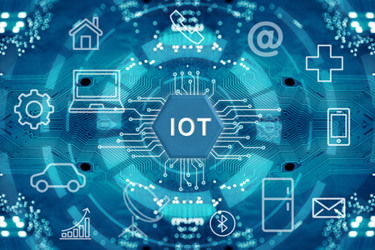7 Patient Benefits Of IoT-Connected Medical Devices
By Sergey Ivanov, head of healthcare solutions department, ITransition

Patients want better experiences, in particular, more control over their health, more open communication with care providers, and better access to care services. Reshaping patient experience is a complex process that involves multiple approaches, and one of the most promising is utilizing the Internet of Things in healthcare.
The Internet of Things (IoT) consists of interconnected devices and sensors that exchange data via the internet. In the healthcare setting, IoT's most common applications are remote health systems or facility monitoring networks, which collect valuable data and send it to the hub for storage and distribution to other software, e.g., the analytical suite for medical pattern recognition. Processed data is used by other software, medical personnel, or patients themselves as a basis for further action.
A common example of an autonomous IoT system in the healthcare setting is an automated closed-loop insulin delivery (AID) system connected to a glucose monitoring device. The device continuously checks glucose levels in the patient's blood and delivers the optimal insulin dosage through the pump.
However, the application of IoT in healthcare has recently gone beyond patient monitoring and treatment delivery. Smart connected devices are now increasingly employed to manage the flow of patients and their distribution to different facilities, monitor the quality of air and sanitary conditions in hospitals, and perform other tasks directly influencing patient experiences. Looking at all possible ways of applying the Internet of Things in healthcare, we can highlight seven main areas where it makes patient experiences significantly better:
1. More services available at home
Leaving the comfort of home is difficult for most patients, but for some, it may even interfere with the treatment itself. This applies to people with restricted mental or physical abilities, immunity disorders, seniors, and young children. Wearable health trackers and automated medication delivery systems can replace many in-hospital procedures, saving patients from the dreaded visit to the doctor’s office.
2. Active health management
IoT helps track and visualize health parameters, which makes it easier for patients to understand and monitor their conditions. Smart connected devices can also remind users when to take medication, measure specific vitals, or connect with healthcare practitioners. People feel compelled to work on their lifestyle and adhere to the treatment more when they see an immediate impact of their actions on their health, and IoT devices are great at picking up even the smallest deviations in vital signs.
3. Precise and comfortable diagnostics
Thanks to sophisticated IoT diagnostic devices like ingestible robots for gastrointestinal tract checkups or portable EEG headsets, more conditions can be diagnosed at earlier stages, with improved accuracy and comfort for the patient. What’s also important is that such devices help identify patterns that were unknown to care providers before and thus contribute to the research and diagnostics of rare disorders, elevating the success rate of treatment.
4. Improved patient safety
IoT helps to keep patients safe in multiple ways. For example, IoT-enabled wearable devices detect dangerous changes in patients’ vitals, as well as falls and irregular movements, and immediately send alerts to caregivers or healthcare professionals. Smart medication dispensers can also ensure better medication adherence by automatically injecting medication into patients’ bloodstreams.
But even gadgets that don’t have such advanced functionality still can help with treatment reminders. Additionally, there are IoT devices that monitor environmental factors like air quality, temperature, humidity, and bacterial load in the environment and help prevent potential health hazards in hospitals and at home.
5. Streamlined patient-doctor communication
Connected devices can transfer health data in real time to healthcare professionals, enabling remote consultations and telemedicine sessions. Patients can securely share their symptoms, progress, and concerns with their healthcare team, who can then provide timely feedback, advice, and adjustments to treatment plans. This real-time communication improves patient-provider relationships, reduces response times, and ensures more personalized care delivery.
6. Reduction of hospital overcrowding
Remote patient monitoring (RPM) devices and telemedicine enable early detection and management of various health conditions, preventing patients from hospitalization. This frees up resources and facilities for more critical cases, mitigates medical personnel burnout, and reduces the risk of hospital-acquired infections. Additionally, IoT-enabled inventory tracking and facility management devices help efficiently redistribute equipment and patients between wards.
7. Enhanced medication effectiveness
IoT systems can facilitate drug research, for example, by tracking adverse reactions in patients with different health conditions or analyzing the minimal dosage of medication that would yield the desired therapeutic effect. Pharmacies and healthcare providers can then use this data to improve the existing medications, making them safer and more effective, and develop new generations of drugs.
Leveraging IoT
While the Internet of Things seems like a powerful tool to boost patient satisfaction, care providers shouldn’t jump onto this trend just for the sake of innovation. Implementing IoT into a healthcare ecosystem can be a costly investment. Have a clear vision of how it is going to transform your workflows, processes, and medtech products before committing to the adoption of an IoT system. Understand how IoT can add value to each one of them and how it can improve the experiences of patients. Then you can verify your vision with your team or suitable software vendors and realistically project how fast you can expect a return on your investment.
